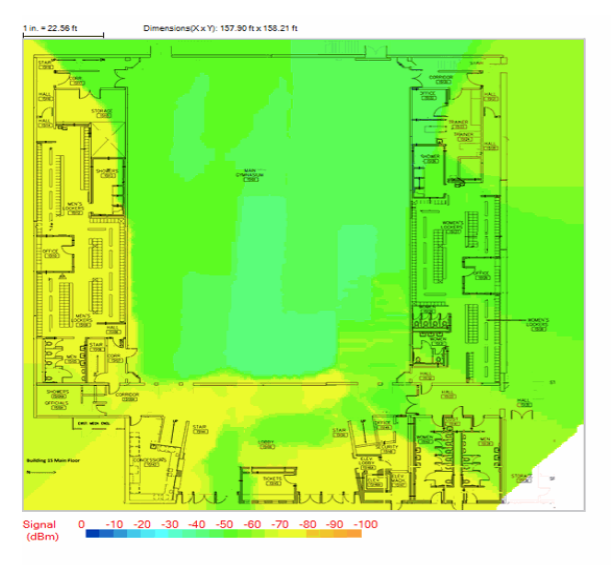Wireless Site Surveys

A question I often get asked during new wireless local area network deployments (WLAN) is, "Do I really need a wireless site survey?" The simple answer is yes! Of all the wireless site survey's we do on a regular basis, there are two main types commonly used. The first being the traditional site survey utilizing hardware and software to analyze the wireless environment in real time. This is a professional service engagement and usually incurs a fee. The second, and cheaper alternative, is a virtual survey using software tools to "predict" a modeled deployment. At Semaphore, we actually provide a virtual survey as part of our pre-sales process at no cost to the customer. The follow up question often received is, "Well, which method is right for me?"
A virtual survey is suitable for wireless environments with open floor plans. Spaces with cubicles, limited office space and conference rooms are good candidates for a virtual survey. It's important to note that while a virtual site survey is often sufficient for planning purposes, a physical walk through is always highly recommended to minimize potential pitfalls and wireless hazards. It is very common to find easily overlooked areas that can greatly impact wireless coverage and performance.
A traditional site survey is a perfect fit for complex wireless environments. Below are a few examples.
*Hospitals
*Biotechnology Companies
*Educational Buildings
*Warehouses
*Manufacturing Facilities & Plants
*Airports
*Convention Centers
*Lecture Halls
*Retail Spaces
*Old Construction & Historical Buildings
Hospitals and Biotechnology firms are unique cases with many RF impacting obstacles. Diagnostic imaging suites and laboratories are often constructed with wall and ceiling materials that block RF signals. Elevator shafts, heavy equipment, electrical conduit, plumbing, and other sources of RF interfering materials can greatly impact wireless coverage and performance.
High density wireless environments such as educational buildings, convention centers, lecture halls, and airports require special attention due to greater densities of access points deployed and higher concentrations of wireless users.
Buildings constructed of brick, stone, cinderblock, and concrete are common candidates for a traditional site survey. Shelving, and the items they store, found in warehouses and retail spaces can have a significant impact on the wireless coverage and performance as well.
Wireless mesh utilizing directional antennas is another candidate for a traditional site survey due to their complex nature and distances involved between access points.
The key concept to remember is complexity. A virtual site survey is often sufficient for simple wireless environments. Any increase in complexity usually presents a justification for a traditional site survey. The costs involved, troubleshooting a botched wireless deployment, are often significant. Most wireless environments we troubleshoot could have easily been prevented by a thoroughly planned deployment utilizing a traditional site survey. To summarize, a virtual site survey is a computer generated model that estimates a best case scenario. A traditional site survey utilizes tools that allow us to actively monitor the wireless environment in realtime. The result is an actual data set instead of a virtual guess.
Seattle, WA.